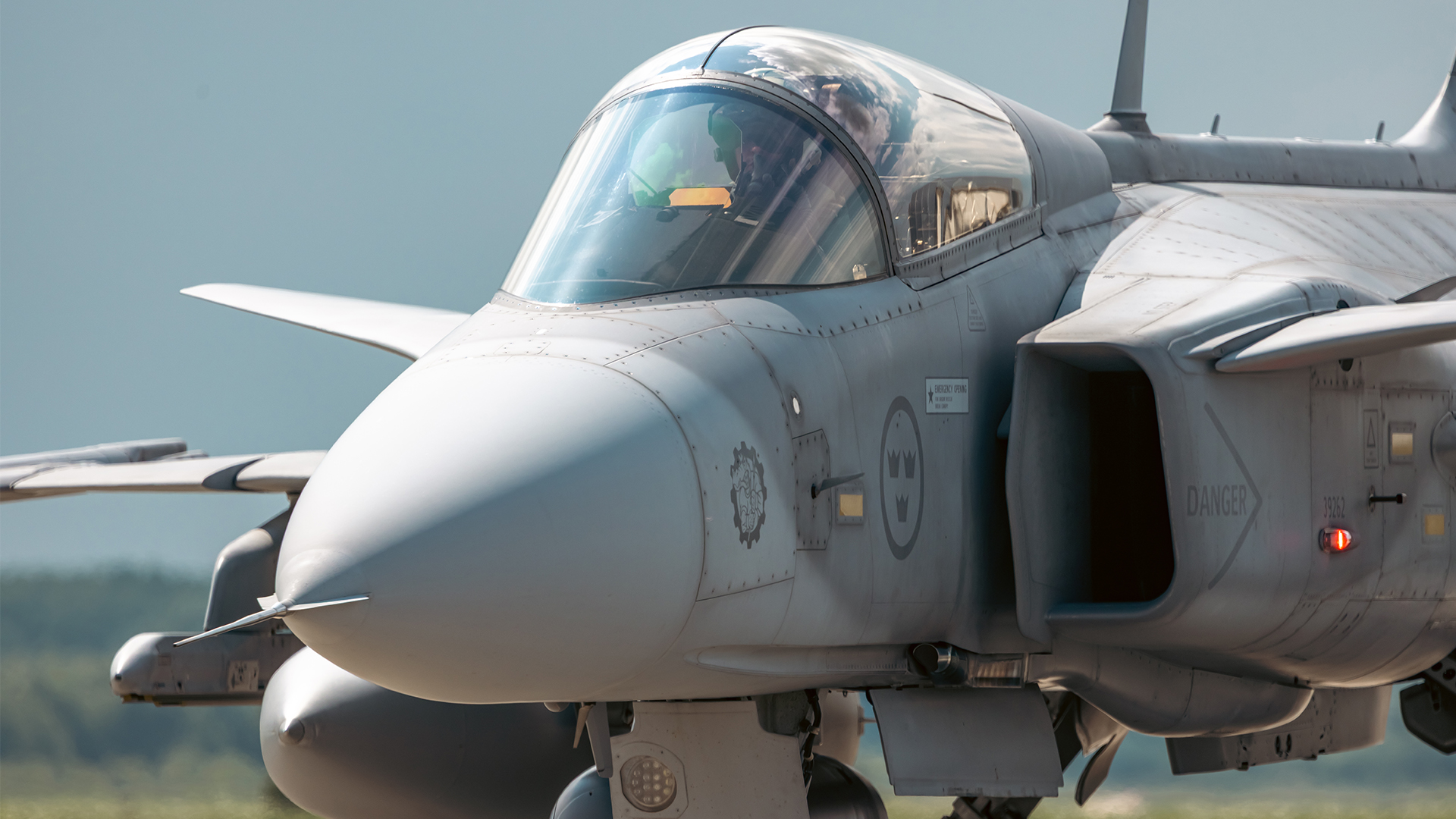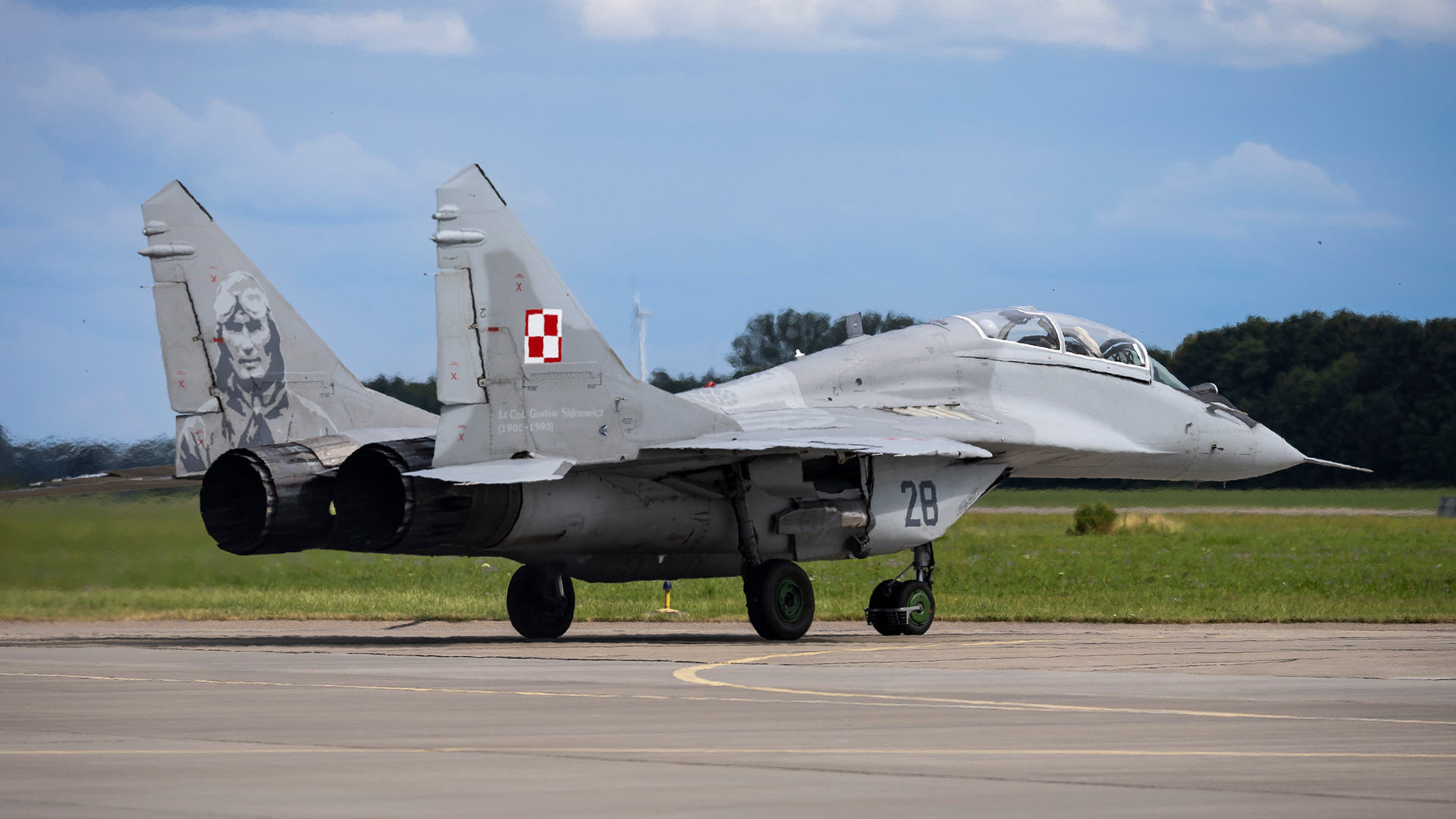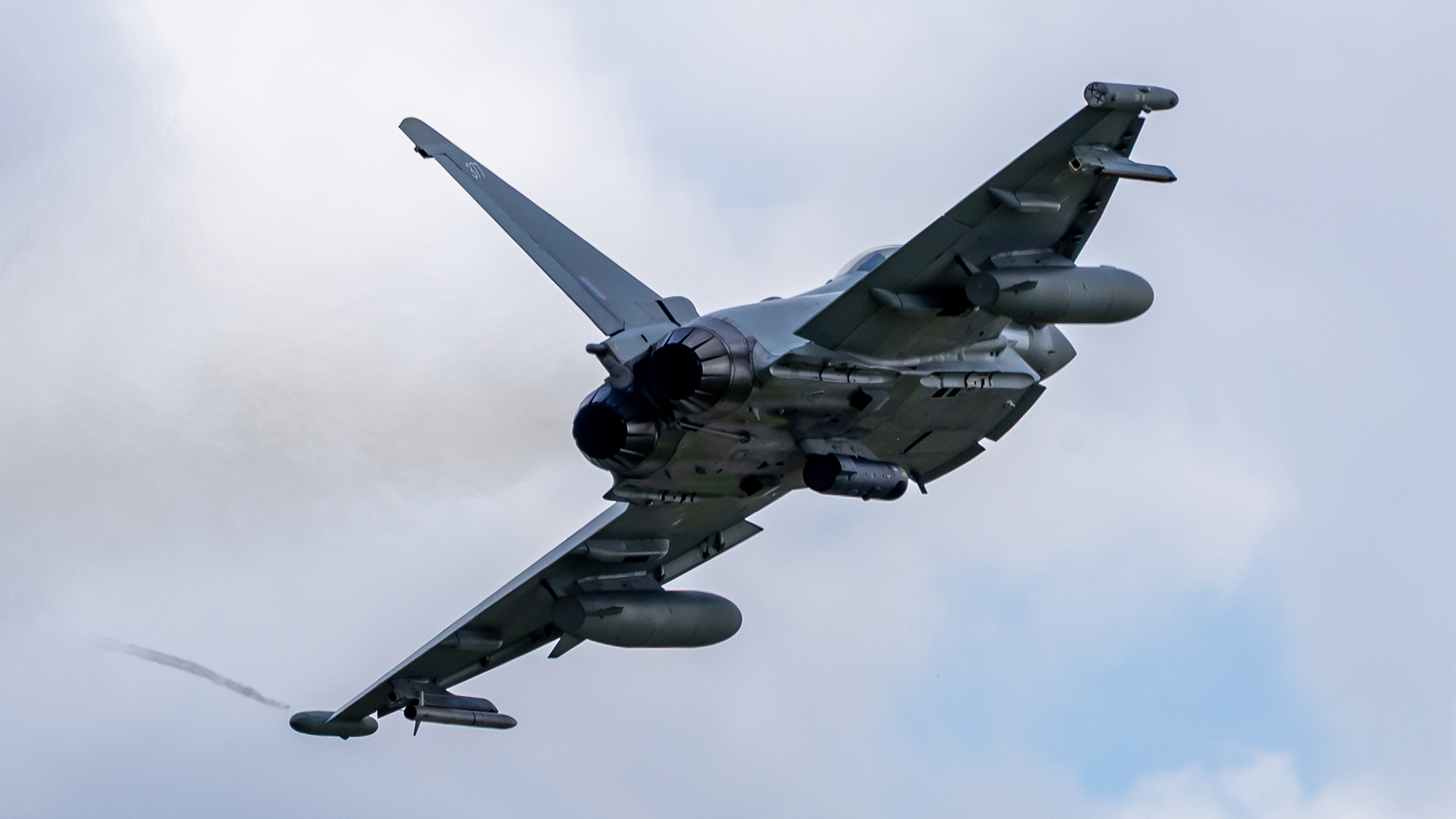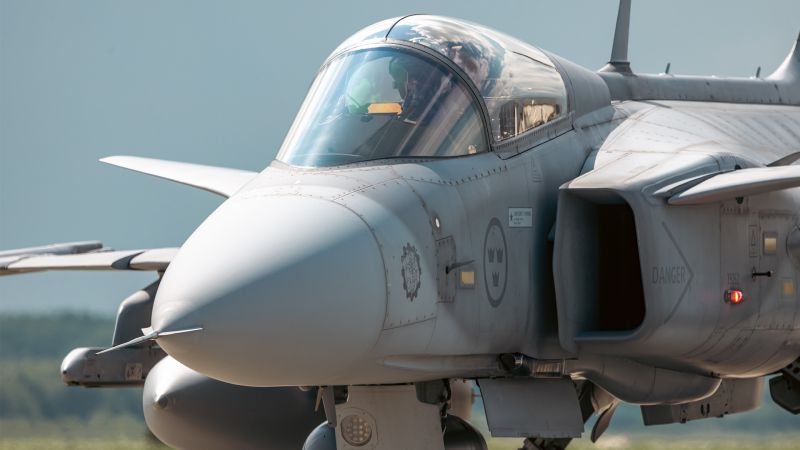 This Gripen, along with the other jets, was flying out of 22 Tactical Air Base in Malbork (Picture: MOD)
This Gripen, along with the other jets, was flying out of 22 Tactical Air Base in Malbork (Picture: MOD)RAF Typhoon pilots working with their Polish and Swedish counterparts illustrate just how quickly potential adversaries can be intercepted, their commander has said.
Operation Chessman, which has now drawn to a close, saw the Typhoons operate alongside Polish MiG-29UBs and Swedish JAS 39 Gripens to help safeguard the airspace over Poland and the broader Baltic region.
Flying regular sorties and maintaining constant readiness, these aircraft were part of Nato’s enhanced Air Policing mission based out of Malbork Air Base.
One typical incident saw a Typhoon from II Army Cooperation (AC) Squadron intercept a Russian air force Ilyushin Il-20M.
The Il-20M, which has the Nato reporting name Coot-A, is a communications and electronic signals intelligence surveillance aircraft – a spy plane.
The mission fulfilled by the Typhoons, MiGs and Gripens was to deliver a rapid response to any potential airspace violations, deter aggression and demonstrate Nato’s collective resolve to protect the skies across the Alliance.
 The Typhoon keeps a close watch on the Russian Il-20M – this was one of more than 20 interceptions that were carried out on Chessman (Picture: MOD)
The Typhoon keeps a close watch on the Russian Il-20M – this was one of more than 20 interceptions that were carried out on Chessman (Picture: MOD)
RAF detachment commander Wing Commander Chris Jacob said: “We’re here for Nato, we’re here for the members of Nato.
“We’re here to provide that collective defence, along with all our other partners across Nato, particularly to the eastern flank at this vulnerable time.
“The speed at which those aircraft get up alongside and interact with aircraft of interest is an example of how closely knit together we are as an air policing mission and for that collective deterrence and defence.”
 This two-seat MiG-29UB was part of the Polish contingent on Op Chessman (Picture: MOD)
This two-seat MiG-29UB was part of the Polish contingent on Op Chessman (Picture: MOD)
His comments were echoed by his Swedish counterpart, Colonel Anders Gustafsson, who said: “What we want to do is show that of course we’re here for you, to defend you.
“And we’re ready to support you.”
Nato’s enhanced Air Policing is a continuous, rotational mission that ensures 24/7 airspace security over allied territory.
 A Typhoon heads for home at the successful conclusion of the four-month mission (Picture: MOD)
A Typhoon heads for home at the successful conclusion of the four-month mission (Picture: MOD)
The Typhoon element came from II (AC) Squadron, which is based at RAF Lossiemouth and is one of two Quick Reaction Alert (QRA) stations in the UK.
The squadron was one of the first fixed-wing units of the Royal Flying Corps and the aircraft flown during its long history have included the Spitfire XI, the Phantom FGR2 and the Tornado GR1A.
II (AC) Squadron has also conducted QRA missions from Estonia as part of Nato’s Baltic Air Policing mission.

